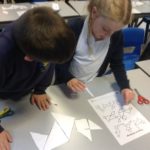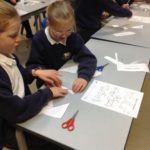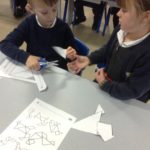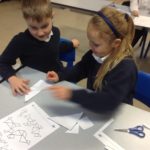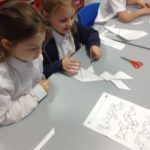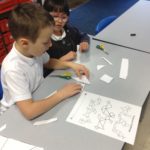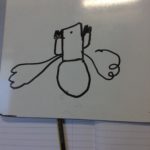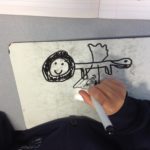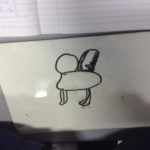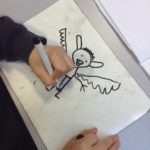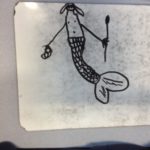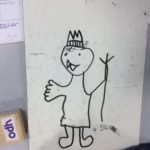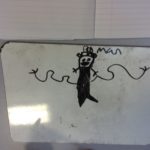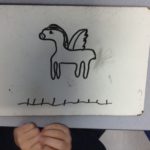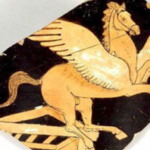It’s so good to keep receiving positive feedback about how we’re doing in these challenging times, including our weekly messages. Many thanks for this. This message kicks off with a gentle reminder. Lower down, there are details about some ways to support your child’s learning at home (whether they’re self-isolating or just in general). We’ve also important advice about your child keeping warm in school and some news about Christmas.
Continuing to take care
This is the end of the ninth week in school and we’re so fortunate that we’ve not burst a bubble – yet. Within your household group and beyond, it can sometimes feel a bit too much of an effort to maintain all the precautions…
- hands (wash and sanitise them lots during the day)
- face (wear a mask around people outside of your household)
- space (maintain 2 metres distance around others)
…however, please do keep helping us keep our schools open for all. In general, respect the national lockdown restrictions, and in school, wear a mask and keep your distance from others at the start and end of the school day.
Supporting your child at home 1 – online activities
Since September, there’s a fairly steady number of children having to stay at home due to Covid. Whether your child is self-isolating or if you’re keen to provide a bit of extra support at home, please do remember we publish an overview of learning for your child to get on with at home on our Home learning page. Contact us if this online approach doesn’t work for you – we can provide paper-based learning if you’re child is self-isolating at home. It’s definitely also worth checking out our Help your child and Calculations and times tables pages which both contain a range of ideas, links and activities – even just a bit of regular practice of times tables and handwriting can make loads of difference!
Talking of times tables, Times Tables Rock Stars is an app and website that we use in school to quicken the recall of tables facts. It’s something that you can use at home, too – your child has their own username and password. (If you don’t have these, or you have any questions, email your child’s class teacher.) Each game is short so you don’t need lots of time. ‘Garage’ is where you’ll find tables set by us whilst ‘Soundcheck’ includes all facts up to 12 x 12.
We’ve just signed up to Numbots, too. Perhaps more suited to younger children or children who need a bit of extra support with the basics, this is a great app and website for practising addition and subtraction facts. Your child can use it at home – they login using the same details they use for Times Tables Rock Stars. There are 15 different games, each with a different focus. Topics covered include doubles and number bonds to 10, 20 and 100.
PhonicsPlay is a great website that teachers in Reception to Year 2 (and sometimes Year 3) use in their daily phonics lessons. In each game, you can select the phase of phonics and, more specifically, which letters (graphemes) and sounds (phonemes) to focus on. The games are a fun way to practise reading sounds, real words, ‘alien words’ and sentences. Login details are Sphere (user name) and Spher3 (password). Check out the Resources page.
Supporting your child at home 2 – Zoom workshops for you
Normally in the Autumn term, we provide a range of workshops to help you support your child’s learning at home. This year, we’re happy to offer something similar via Zoom…
The sessions – each lasting just 30 minutes – are:
- Wednesday 18 November: Curriculum
- Monday 23 November: Reading (mainly for Key Stage 2)
- Wednesday 25 November: Phonics (mainly for Reception / Key Stage 1)
- Wednesday 02 December: Maths
- **Re-scheduled date** Monday 07 December: EYFS (mainly for Reception)
- Wednesday 09 December: Times Tables
All six sessions start at 6pm. If you’re interested in attending, please send us a message on the School Gateway app or email us at stjamesoffice@spherefederation.org. We’ll email the joining details out to all those who express an interest.
Keeping warm
Even though it’s getting colder, it’s important that we keep all areas of school as ventilated as possible. Ideally, the windows and doors should be open all of the time but we obviously don’t want staff or children shivering! We’ve asked teachers to judge the temperature and make a decision on whether it’s realistic to keep windows open during lessons. There’ll be times when it’s just too cold so we’ll open windows and doors when children aren’t in the rooms to blast some fresh air in.
Over the coming months, it’d be great if you could make sure your child has an extra layer on under their uniform or an extra jumper or fleece (unbranded and in the school colour where possible). Don’t forget suitable coats, too.
Christmas is coming…
…really?! Whilst we all wait eagerly for news of what Christmas might look like for ourselves and our families, we can say with some certainty that Christmas at school will be quite different.
Unfortunately, many of the things we do involve gathering large groups of children (and adults) together. Sadly, we won’t be performing any nativity plays for you to come and see. Instead, we’ll aim to share Christmas with you virtually with a few festive fun times. Details of these will be shared nearer the time.
Christmas parties will be held in individual classes with each child asked to bring their own party ‘pack-up’ to enjoy. Again, we’ll share details nearer the time.
Christmas will still be fun – just a little different!
